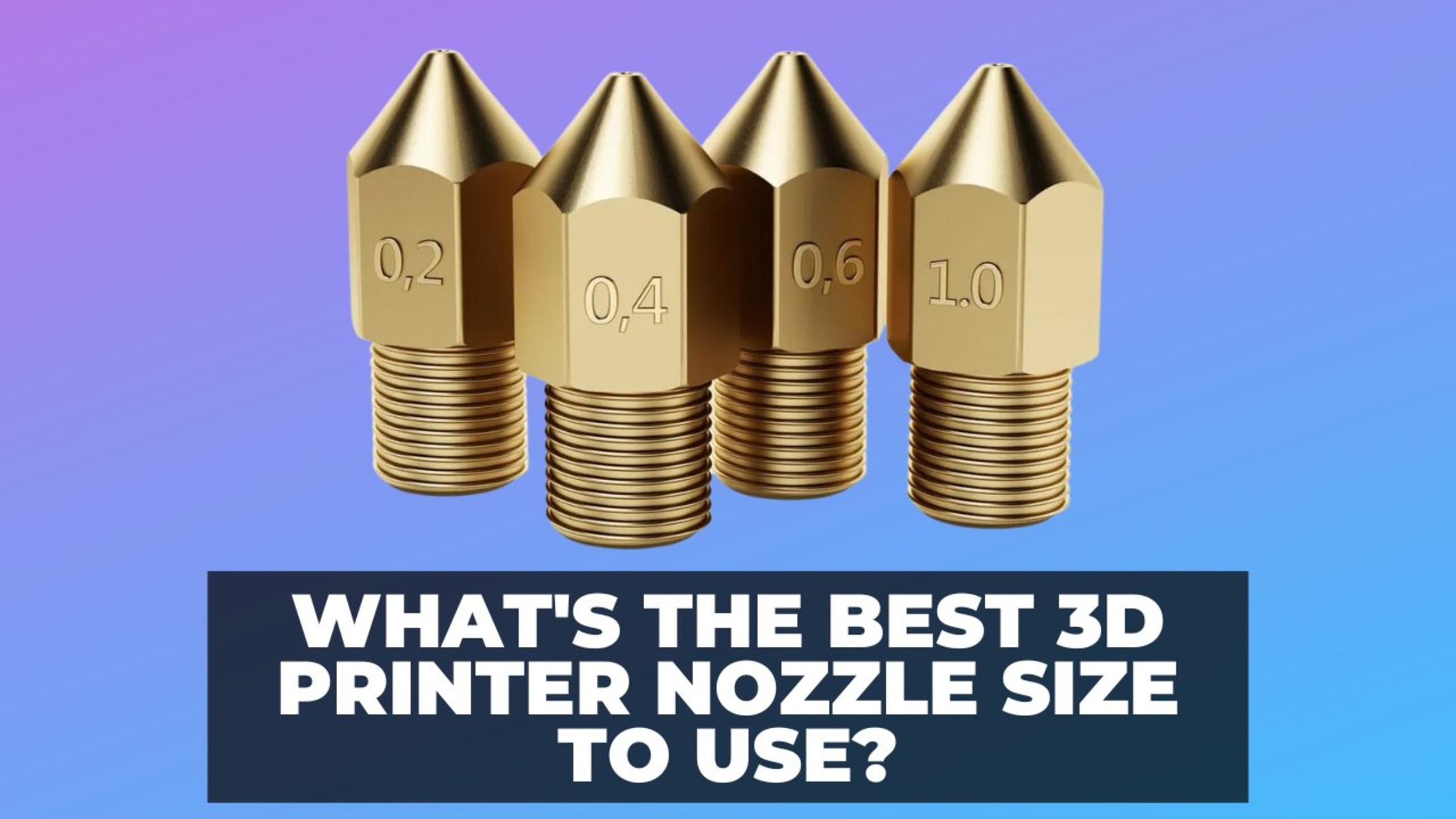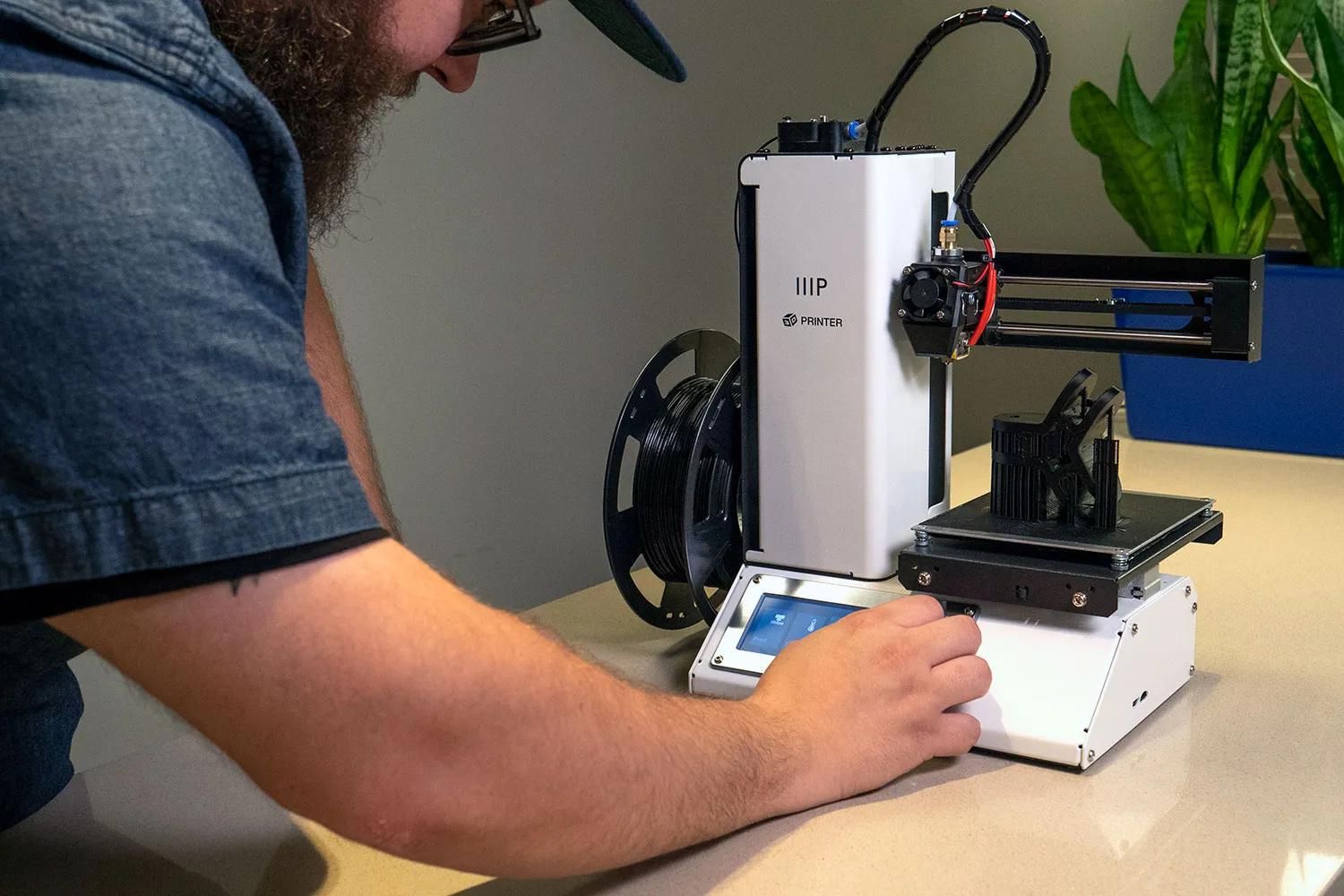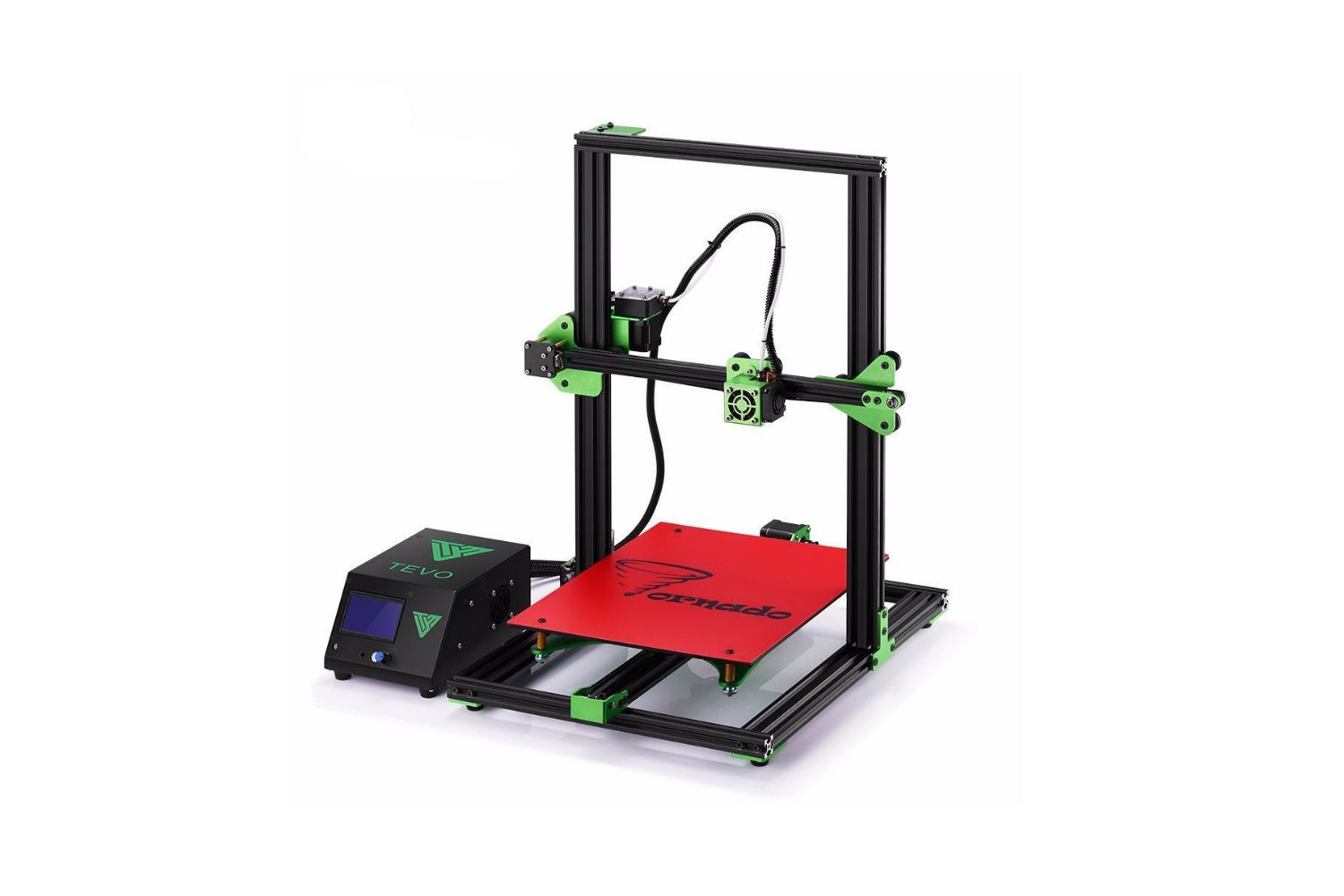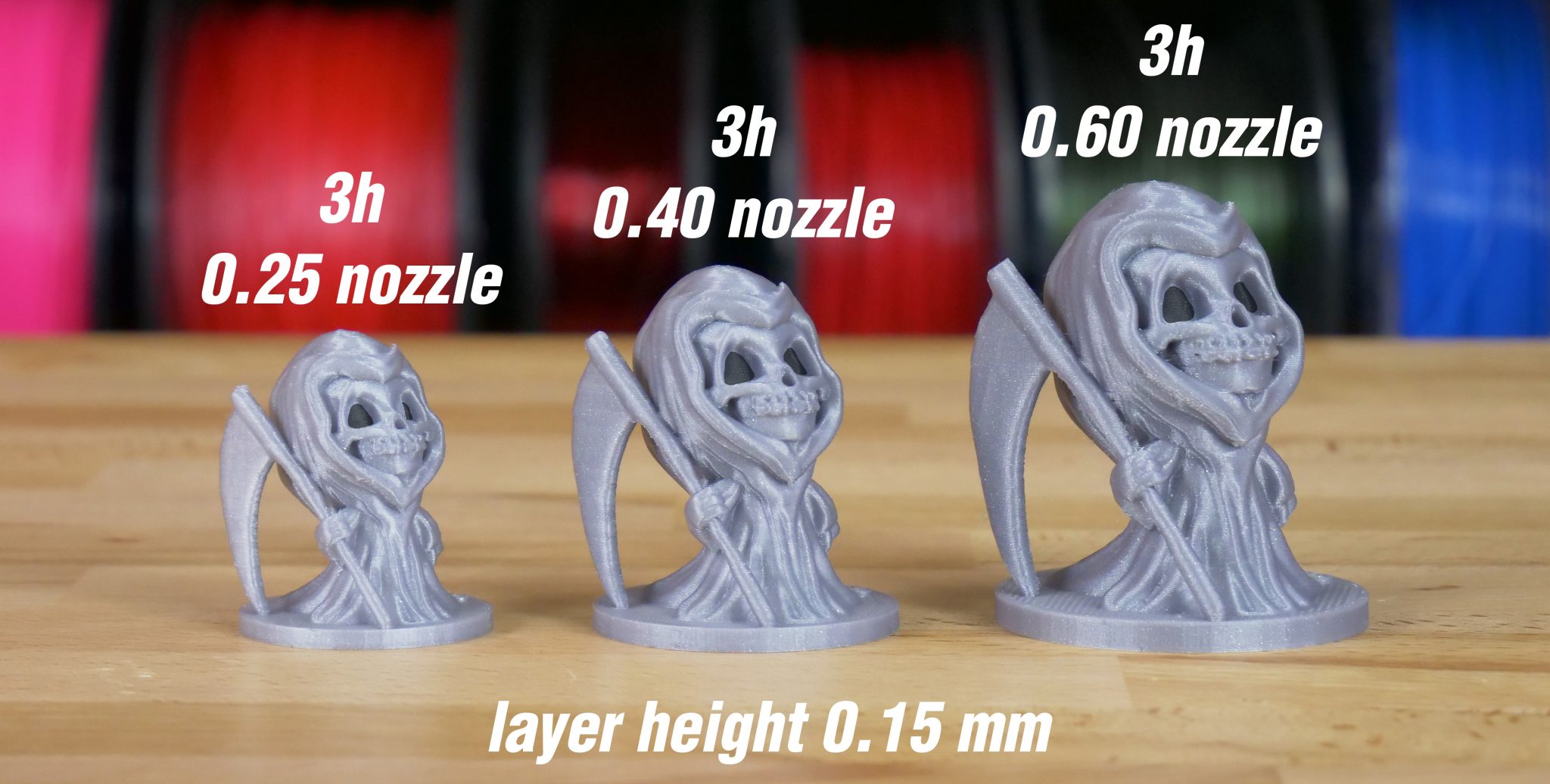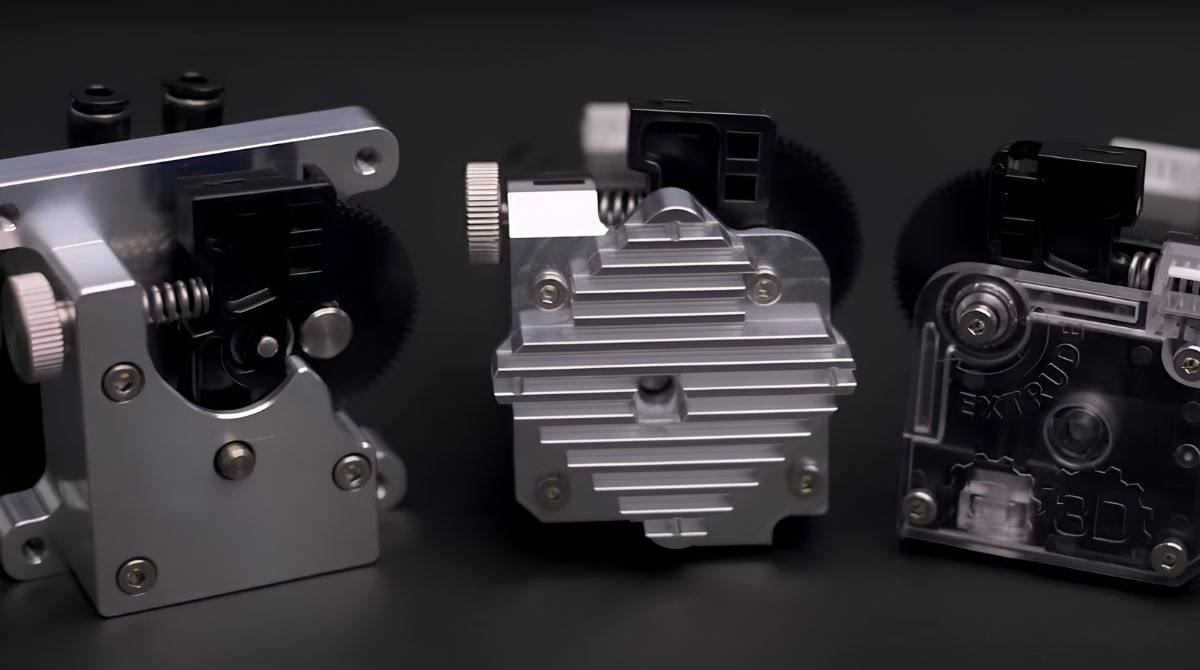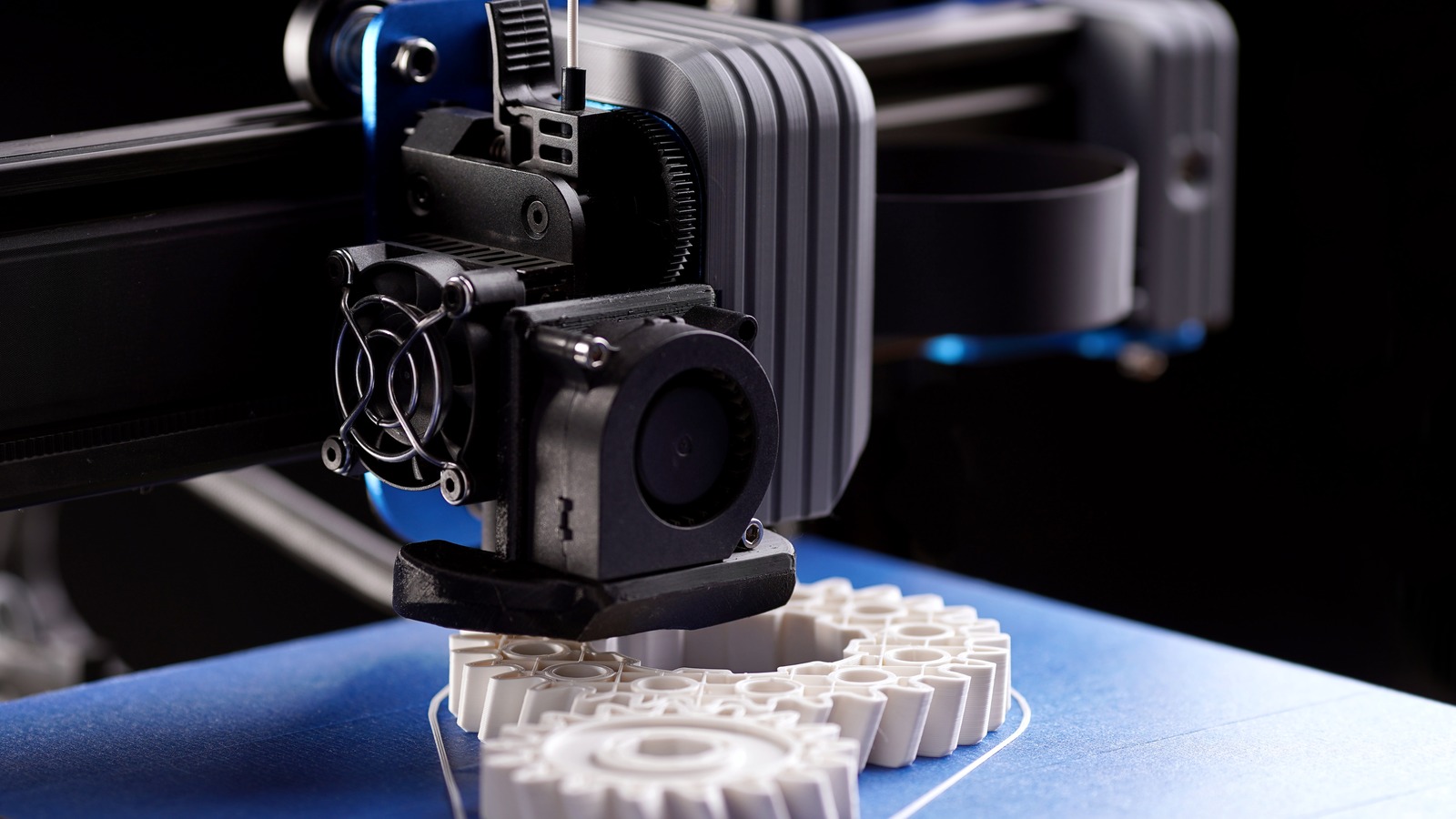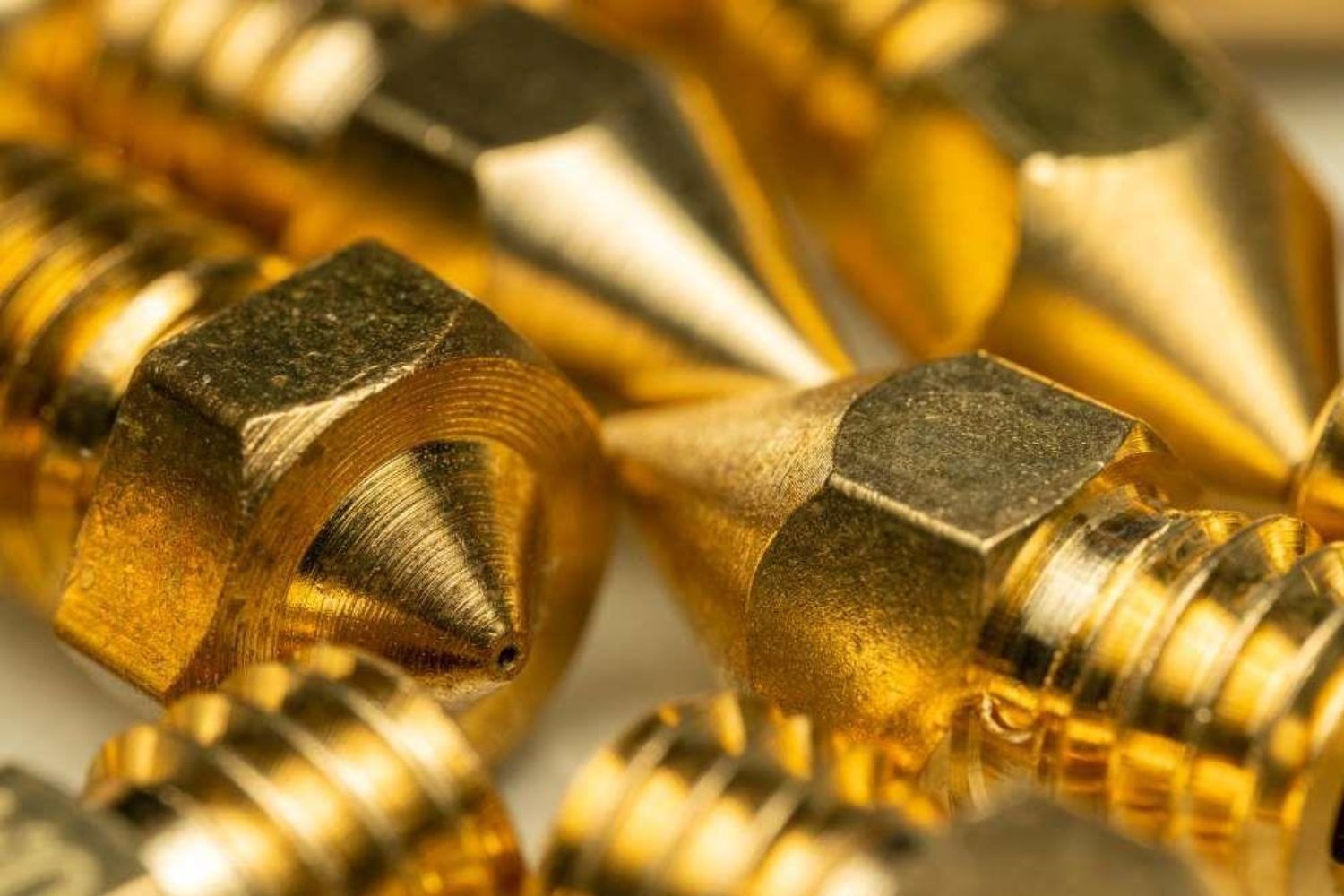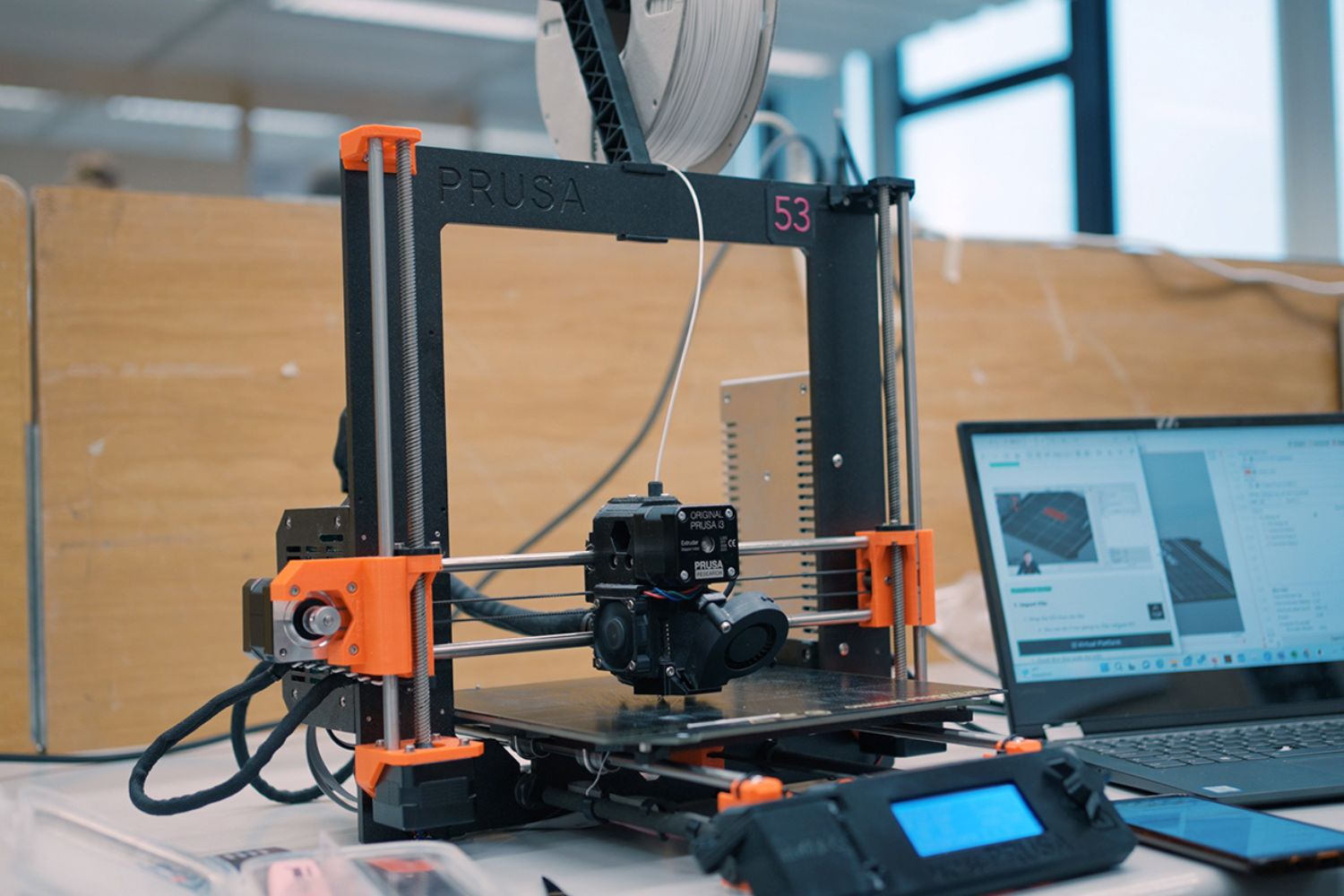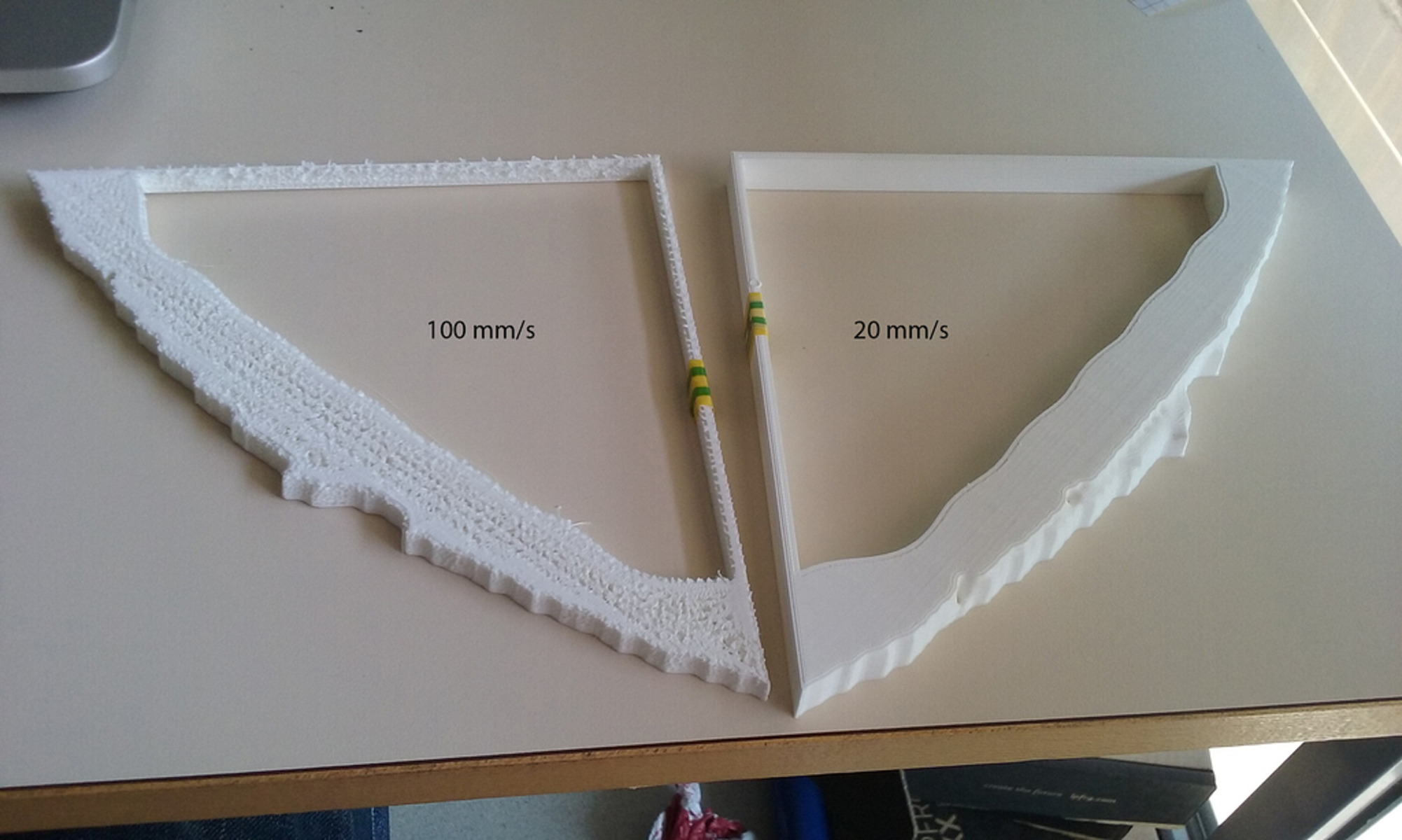Introduction
Welcome to the world of 3D printing! This innovative technology has revolutionized various industries, allowing users to bring their creative ideas to life layer by layer. One of the crucial components of a 3D printer is the nozzle, which plays a vital role in determining the print quality and overall printing experience.
A 3D printer nozzle is a small, cylindrical component that is responsible for extruding the material, often filament, onto the build plate or previous layers to create the desired object. The size of the nozzle determines the diameter of the filament that can pass through, affecting the level of detail, speed, and material compatibility.
Choosing the right nozzle size for your 3D printer is essential, as it can significantly impact the outcome of your prints. There is no “one size fits all” answer when it comes to nozzle selection, as it depends on various factors, including the desired print quality, material type, printing speed, and the complexity of the model.
In this article, we will explore the different nozzle sizes available for 3D printing, discuss the pros and cons of each size, and provide guidance on selecting the ideal nozzle size for your specific needs. Whether you’re a hobbyist, professional, or just starting your 3D printing journey, understanding the importance of nozzle size will help you achieve the best results.
What is a 3D Printer Nozzle?
A 3D printer nozzle is a crucial component of a 3D printer that directly affects the quality and precision of your prints. It is a small, cylindrical piece that is attached to the print head and responsible for extruding the filament onto the build plate or previous layers to create the desired object.
The main function of the nozzle is to heat and melt the filament, allowing it to flow smoothly onto the print surface. The size of the nozzle determines the diameter of the extruded filament, which has a direct impact on the level of detail and strength of the printed object.
Nozzles are typically measured in terms of their diameter, with common sizes ranging from 0.2mm to 1.0mm or even larger. Smaller nozzle sizes result in finer details and smoother surfaces, while larger nozzle sizes produce faster prints but with less intricate details.
It’s important to note that nozzle sizes are often interchangeable, meaning you can swap out one size for another depending on your specific requirements. This versatility allows users to adjust the printing process and optimize it for a particular project.
Furthermore, the nozzle material is also worth considering. Most nozzles are made from brass, which is a good conductor of heat and provides consistent melting of filaments. However, there are also stainless steel or hardened steel nozzles available, which offer increased durability and compatibility with abrasive filaments like carbon fiber or metal-filled materials.
Overall, the nozzle is one of the key components that determine the level of detail, print speed, and material compatibility of your 3D prints. Choosing the right nozzle size and material is essential for achieving your desired printing outcomes.
Factors to Consider When Choosing a Nozzle Size
When it comes to choosing the right nozzle size for your 3D printer, several factors should be taken into consideration in order to achieve desired print results. These factors include:
Print Detail
The level of detail you want to achieve in your prints is an important consideration when selecting a nozzle size. Smaller nozzle sizes, such as 0.2mm or 0.3mm, are ideal for intricate prints that require fine details and smooth surfaces. On the other hand, if you are working on larger prints that don’t require a high level of detail, a larger nozzle size, like 0.6mm or 0.8mm, would be more suitable.
Print Speed
Nozzle size also plays a role in determining the speed of your prints. In general, larger nozzle sizes allow for faster extrusion rates, resulting in faster print times. If you are prioritizing speed over intricate details, a larger nozzle size can save you valuable time. However, it’s important to note that increasing the speed of your prints may affect the overall print quality.
Material Compatibility
The material you plan to use for your prints is another crucial factor in selecting the right nozzle size. Different materials have varying flow characteristics, and some may require larger or smaller nozzle sizes for optimal results. For example, flexible filaments typically require larger nozzle sizes to prevent clogging, while more brittle materials may benefit from smaller nozzle sizes to reduce the risk of nozzle jams.
Printer Power
The power of your 3D printer’s heating element can also impact the choice of nozzle size. Smaller nozzle sizes require higher heat to melt the filament efficiently, so make sure your printer can reach the necessary temperature for the chosen nozzle size. Most standard printers can handle nozzle sizes up to 0.4mm without any issues, but larger sizes may require more powerful heating elements.
By considering these factors, you can make an informed decision on the nozzle size that best suits your specific needs, balancing print detail, speed, material compatibility, and the capabilities of your printer.
Common Nozzle Sizes for 3D Printing
When it comes to 3D printing, there are several common nozzle sizes that are widely used in the industry. These sizes provide a range of options to cater to different printing needs. The most commonly available nozzle sizes include:
0.2mm
Considered an ultra-fine nozzle size, 0.2mm is ideal for highly detailed prints that require intricate designs and smooth surfaces. However, it should be noted that prints using this nozzle size may take longer to complete due to the finer level of detail and slower extrusion rates.
0.4mm
The 0.4mm nozzle size is the most standard and widely used option in 3D printing. It provides a good balance between detail and speed, making it suitable for a wide variety of prints. This nozzle size is often included as the default option in many consumer-grade 3D printers.
0.6mm
For those looking for faster print speeds with acceptable detail, the 0.6mm nozzle size is a popular choice. This size allows for increased extrusion rates, which can significantly reduce printing time. However, due to the larger diameter, intricate details may not be as precise as with smaller nozzle sizes.
0.8mm
The 0.8mm nozzle size is commonly used for quick and larger prints that don’t require fine details. This nozzle size is suitable for projects where speed is a priority over intricate designs. It offers relatively fast print times with acceptable quality.
1.0mm and larger
Nozzle sizes of 1.0mm or larger are considered large sizes and are typically used for rapid prototyping or prints where fine details are not a concern. These nozzle sizes can extrude a significant amount of filament at once, resulting in very fast print speeds. However, it’s important to note that the quality and level of detail may be compromised with larger nozzle sizes.
These common nozzle sizes provide a range of options for different printing requirements. It’s worth experimenting with different nozzle sizes to find the one that best suits your specific project needs, balancing detail, speed, and material compatibility.
Pros and Cons of Different Nozzle Sizes
When choosing a nozzle size for your 3D printer, it’s important to consider the pros and cons of each size in order to make an informed decision. Here are the advantages and disadvantages of different nozzle sizes:
Small Nozzle Sizes (e.g., 0.2mm, 0.3mm)
- Pros: Small nozzle sizes allow for highly detailed prints with smooth surfaces. They provide excellent precision and are ideal for intricate models or objects that require fine details. Additionally, smaller nozzle sizes are less prone to filament oozing, resulting in cleaner prints.
- Cons: The main drawback of small nozzle sizes is the longer print time due to the finer details. They also have a higher risk of clogging, especially with materials that contain additives like carbon fiber or metal particles. Furthermore, prints using small nozzle sizes may be more prone to failed prints if the printer settings are not properly calibrated.
Standard Nozzle Size (e.g., 0.4mm)
- Pros: The 0.4mm nozzle size is the most commonly used option and provides a good balance between detail and speed. It allows for decent print resolution and is compatible with a wide range of materials. Standard nozzle sizes are also readily available and widely supported by slicing software.
- Cons: While the 0.4mm nozzle size is versatile, it may not provide the level of detail that smaller nozzle sizes can achieve. It may also not be suitable for prints requiring high precision and surface quality, such as miniatures or objects with intricate textures.
Large Nozzle Sizes (e.g., 0.6mm, 0.8mm)
- Pros: Large nozzle sizes offer faster print times due to their ability to extrude a larger volume of filament. They are ideal for rapid prototyping or prints where fine details are not a priority. Additionally, large nozzle sizes can be more forgiving when it comes to filament inconsistencies or impurities.
- Cons: The tradeoff with large nozzle sizes is a decrease in detail and surface quality. These sizes may not be suitable for prints that require intricate designs or high-resolution finishes. They may also exhibit more visible layer lines and less smooth surfaces compared to smaller nozzle sizes.
It’s important to understand the advantages and disadvantages of different nozzle sizes to determine which one best aligns with your specific printing requirements. Consider factors such as the desired print quality, speed, material compatibility, and the level of detail needed for your project.
Best Nozzle Sizes for Specific 3D Printing Applications
Choosing the best nozzle size for your specific 3D printing application is essential to achieve optimal results. While the ideal nozzle size can vary depending on the project and personal preferences, here are some recommendations for specific applications:
Fine Detail and Small Objects
For prints that require intricate details and fine surface finishes, nozzle sizes of 0.2mm or 0.3mm are generally recommended. These smaller sizes allow for precise layering and finer features, resulting in high-resolution prints. Keep in mind that these nozzle sizes may lead to longer print times due to the increased level of detail.
For most general-purpose 3D printing projects, a nozzle size of 0.4mm is considered the optimal choice. It offers a good balance between print resolution, speed, and compatibility with a wide range of materials. The 0.4mm nozzle size is widely supported by slicing software and is commonly found in consumer-grade printers.
If you need to quickly create prototypes or larger-scale prints, nozzle sizes of 0.6mm or 0.8mm are recommended. These larger sizes allow for increased extrusion rates, resulting in faster print times. While the level of detail may not be as precise as with smaller nozzle sizes, these options are ideal for projects where speed and overall dimensions take precedence over intricate details.
For applications that prioritize strength and durability, nozzle sizes of 1.0mm or even larger can be suitable. These larger nozzle sizes allow for increased filament flow, leading to thicker and stronger layers. They are commonly used in prints where structural integrity is critical, such as functional parts or rapid prototyping of larger objects.
These recommended nozzle sizes provide a starting point for specific applications, but it’s important to experiment and fine-tune based on your unique needs. Consider factors such as print quality, speed, strength requirements, and material compatibility to select the best nozzle size that aligns with your printing goals.
Tips for Choosing the Right Nozzle Size for Your 3D Printer
Choosing the right nozzle size is crucial for achieving the desired print quality and optimizing the performance of your 3D printer. Here are some tips to help you choose the best nozzle size:
Consider the Desired Print Quality
Determine the level of detail and surface finish required for your print. If you need intricate designs and smooth surfaces, a smaller nozzle size, such as 0.2mm or 0.3mm, would be ideal. For larger prints that don’t require fine details, larger nozzle sizes like 0.6mm or 0.8mm can offer faster print times with acceptable quality.
Evaluate Print Speed Requirements
If you prioritize print speed over fine details, consider larger nozzle sizes, such as 0.6mm or 0.8mm. These sizes allow for faster extrusion rates and can significantly reduce print times. However, keep in mind that increasing speed may affect the overall print quality.
Examine Material Compatibility
Consider the type of material you plan to use for your prints. Different materials have varying flow properties and may require specific nozzle sizes for optimal results. Flexible filaments, for example, often work better with larger nozzle sizes to prevent clogging, while brittle materials may benefit from smaller nozzle sizes to reduce the risk of nozzle jams.
Assess Printer Power
Check if your 3D printer has a heating element powerful enough to handle your desired nozzle size. Smaller nozzle sizes require higher temperatures to melt the filament effectively. Ensure that your printer is capable of reaching the necessary temperature for the chosen nozzle size to avoid issues during printing.
Experiment and Test
Don’t be afraid to experiment with different nozzle sizes to find the one that suits your specific needs. Test different sizes and evaluate print quality, speed, and compatibility with various materials. This iterative process will help you determine the optimal nozzle size for your projects.
Consider Nozzle Interchangeability
Remember that nozzle sizes are often interchangeable. You can try multiple nozzle sizes to suit different projects or experiment with different materials. This flexibility allows you to adjust and optimize your 3D printing process based on specific requirements.
By considering these tips, you can choose the right nozzle size for your 3D printer and ensure optimal performance and print quality for your projects. Remember that the ideal nozzle size may vary depending on the specifics of each print, so don’t hesitate to explore different options and find the one that works best for you.
Conclusion
Choosing the right nozzle size for your 3D printer is a critical factor in achieving high-quality prints that meet your specific needs. By considering factors such as print detail, speed requirements, material compatibility, printer power, and conducting tests and experiments, you can make an informed decision about the best nozzle size for your projects.
Smaller nozzle sizes, like 0.2mm or 0.3mm, offer finer details and smoother surfaces, but may result in longer print times and a higher risk of clogging. Standard nozzle sizes, such as 0.4mm, provide a good balance between detail and speed and are commonly used for most general-purpose prints. Larger nozzle sizes, like 0.6mm or 0.8mm, can provide faster print times, but may sacrifice some finer details. Nozzle sizes of 1.0mm or larger are suitable for structural prints and rapid prototyping where strength and speed are prioritized over intricate details.
Experimentation and testing with different nozzle sizes can help you optimize the print quality and performance of your 3D printer. Additionally, considering nozzle interchangeability and assessing the compatibility of different materials with specific nozzle sizes can expand your possibilities for various printing projects.
Remember that there is no one-size-fits-all answer when it comes to choosing a nozzle size. It ultimately depends on your unique requirements and preferences. Take into account print quality, speed, material compatibility, and the capabilities of your 3D printer to select the best nozzle size that aligns with your specific printing goals.
Choose wisely, experiment, and enjoy the creative possibilities that 3D printing offers with the right nozzle size for your projects. Happy printing!







